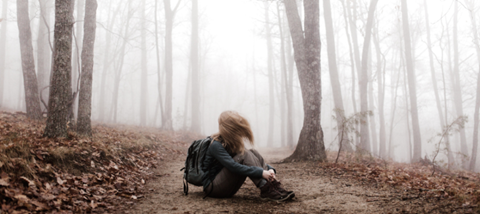
I’ve grown up in the social media world where the people of influence are YouTubers and TikTokers, not footballers and TV stars. In this world, mental health awareness has been on the rise with YouTuber’s coming out about their struggles with anxiety and depression. The Royals and school initiatives have helped too over the past few years.
But while there is lots of talk about anxiety and depression, there is still so much confusion about how you look after your mental health, how you cope when you are struggling and even how to tell if you are struggling with something. It feels like we have done a great job at raising awareness, but what next? Raising awareness has been great but now we need to start educating and equipping teenagers and children on how to understand how they feel and crucially, do something about it.
It was only when I started to struggle myself with depression and burn out that I realised that I actually knew nothing about how to cope and what to do when struggling with my wellbeing. So today, during Mental Health Awareness Week, I thought I would share a few tips I have learnt though working with my charity, Kintsugi Hope; tips that I would have found super useful to my younger self.
It’s okay not to be okay
When I was struggling with mild depression, I was so ashamed. On the outside my life was good. I had friends, I was successful in what I was doing and nothing bad had happened in my life. Yet, I felt down and emotionless. It didn’t makes sense. I felt like I had no right to feel like this when there were people dying and starving in the world. This just added to the shame and made me keep silent about it for longer then I should have.
I wish I had known that mental health effects everyone and that my state of wellbeing isn’t in correlation with how weak or strong I am. People struggle, and there is no shame in that. Talking and being honest about this is the first step in taking control of it. Being vulnerable is one of the bravest things you can do.
Stress bucket
The stress bucket is something we talk about in the Kintsugi Hope Wellbeing Groups. This is an exercise that helps you understand what fills your stress bucket. For example, for young people, it may include exams, work or travelling. Equally we look at what empties your stress tank by bringing stress levels down, like exercise and meeting friends.
To do this exercise: draw a bucket with a tap on some paper and then write what fills and what empties the bucket. For myself, I know if I don’t want to burn out I need to make sure that I go to a coffee shop on my day off and read a book for a few hours. (Of course during lockdown this had turned into sitting in the garden). This has been enormously valuable helping me not get overwhelmed with life, and cause my mental health to go downhill.
Understand the early signs
We need to understand the early signs that our mental health might be starting to go downhill. For me, I know that if motivation levels drop and I spend time comparing myself to people on Instagram, I’m on the downhill slope. When this happens I know straight away I need to take some time off social media, talk to my friends and spend some time with God. I can catch myself in the early signs of my emotional health going downhill and maintain an equilibrium. T
Try this for yourself. Go to the NHS website and find out the symptoms for anxiety, depression, burn out, etc. Understand the symptoms and look out for them.
Joel Harris is head of youth and social media at Kintsugi Hope, a UK based charity striving to make a difference to people’s mental wellbeing.







































